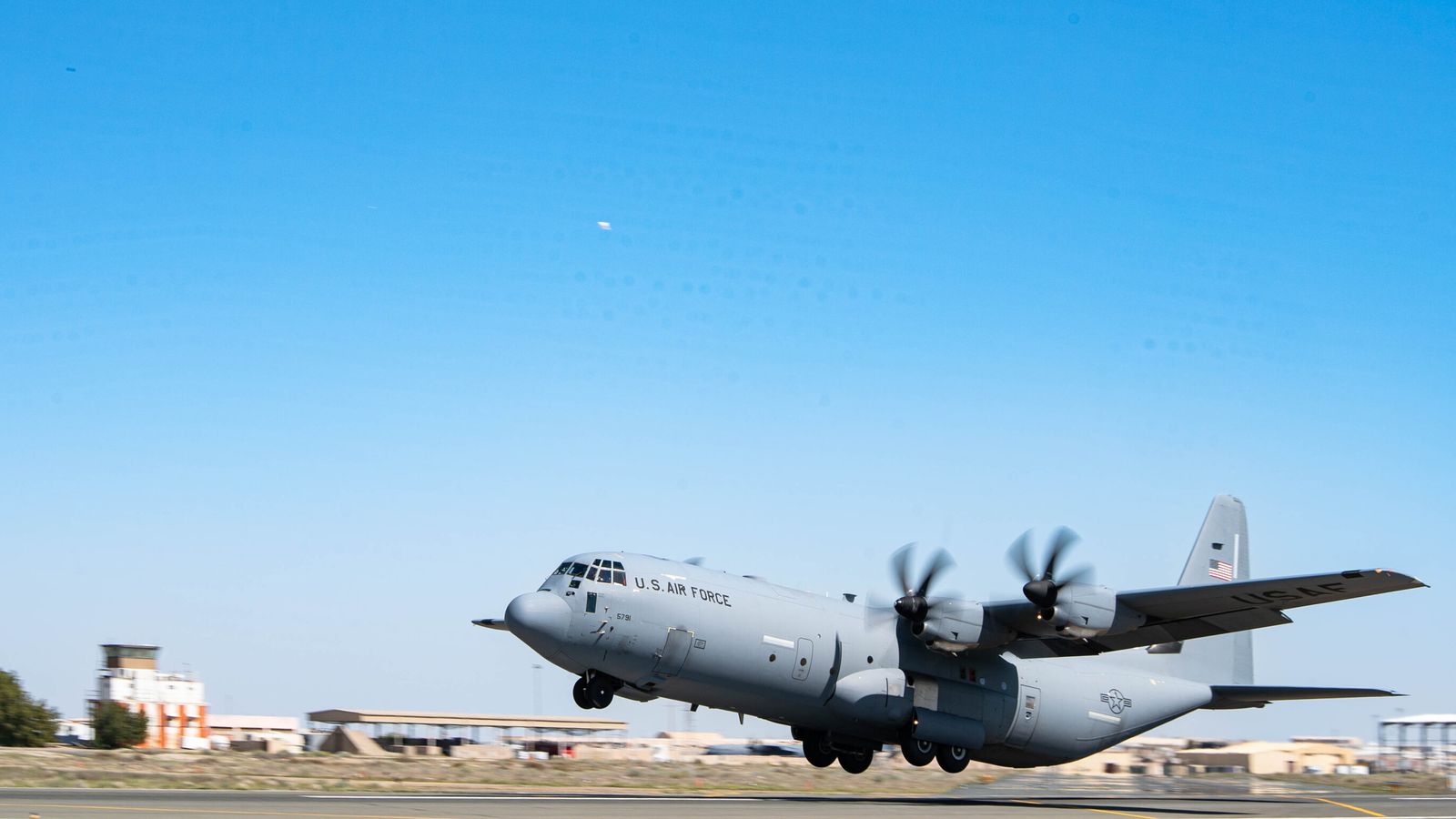The US military has carried out its first airdrop of aid into Gaza, where a quarter of the population is facing starvation.
The joint effort with the Royal Jordanian Air Force, using C-130 Hercules transport planes, saw the US dropping 66 bundles containing more than 38,000 meals along Gaza’s Mediterranean coastline.
A US military official said planning was also under way for “potential follow-on airborne aid delivery missions”.
Since the war between Israel and Hamas began, Israel has barred entry of food, water, medicine and other supplies to Gaza, except for a small trickle of aid entering from the south.
It followed the militant group killing 1,200 people and seizing about 250 hostages on 7 October 2023.
Before then, Gaza relied on a steady stream of 500 supply trucks daily, according to the UN Palestinian refugee agency UNRWA.
That number averaged 150 daily in January and 97 per day in February.
Reports of people eating animal feed to survive and children dying from malnutrition and dehydration have added to the urgency nearly five months into the war.
The US has pleaded on a number of occasions for more aid to be allowed in by road but critics say resorting to expensive and inefficient airdrops shows Washington’s waning influence over its ally.
Egypt, France, Qatar and the United Arab Emirates are among the other countries that have been airdropping aid into Gaza since the conflict began.
In the last two weeks, the UK has worked with Jordan to drop aid, including medicines, fuel and food to Tal al Hawa Hospital in northern Gaza.
Hamas-run Gaza health authorities said on Thursday that Israeli forces killed more than 100 people trying to reach a relief convoy near Gaza City, but Israel said the victims were trampled as crowds rushed the aid trucks.
US President Joe Biden spoke about the deaths on Friday, as he announced the airdrop would be going ahead, saying: “The loss of life is heart-breaking… people are so desperate”.
Read more:
Analysis – Airdrops illustrate just how much of a disaster Gaza is
Exclusive: The company making millions from Gaza misery
Hamas tells Sky News Biden’s ceasefire hopes are ‘wishful thinking’
As well as cost and inefficiency, the risks of airdrops include danger to those on the ground and the possibility that aid ends up in the hands of militants.
White House national security spokesman John Kirby said planes can move aid more quickly than trucks, but in terms of volume, airdrops are only “a supplement to – not a replacement for – moving things in by ground”.
“There are few military operations that are more complicated than humanitarian assistance airdrops,” he added.
This story originally appeared on Skynews

